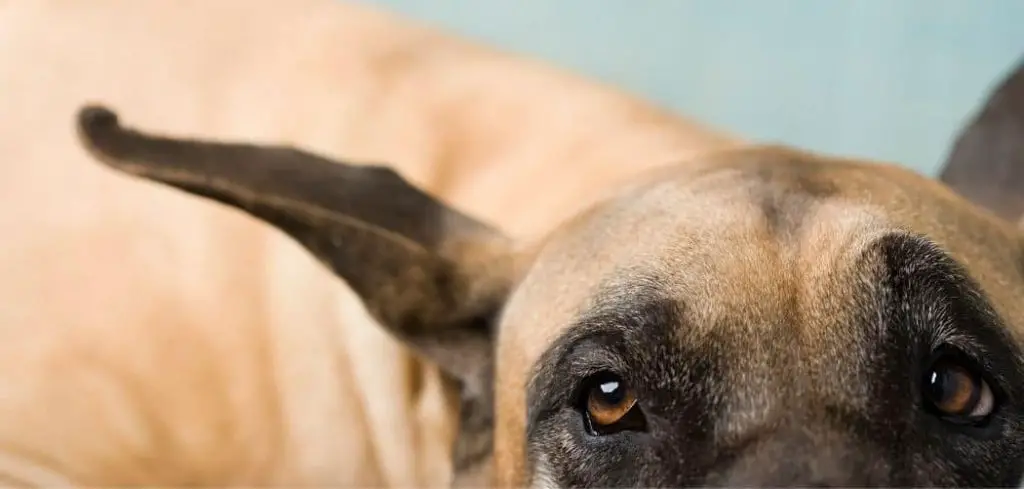It can be confusing and worrying to watch your dog nudge their food bowl around but not actually eat anything. This odd behavior may seem playful or harmless at first, but it can also be a subtle signal that something isn’t quite right.
We outline the common causes of why your dog is nudging his food bowl and not eating, what you can do at home, and when to seek veterinary help.
Why Is My Dog Nudging His Food Bowl and Not Eating? — Why It Happens
When dogs push their food bowl around but don’t eat, it can stem from medical, behavioral, or environmental reasons. Some dogs may be dealing with pain, nausea, or dental discomfort that makes eating unappealing.
Others might be stressed or picky about their food, while a few may simply be trying to communicate something.
Puppies and older dogs are especially prone to changes in eating behavior that may seem odd but are actually important warning signs.

Common Causes of Dog Nudging His Food Bowl and Not Eating
Dental Pain or Mouth Discomfort
If your dog has dental disease, inflamed gums, or a sore tooth, the idea of eating can be unpleasant.
They may approach their food, nudge the bowl out of frustration or curiosity, but then avoid eating because chewing is painful.
This is especially common in small breeds, older dogs, or dogs who haven’t had regular dental cleanings. You might also see drooling, bad breath, or a tilted head when chewing.
Upset Stomach or Nausea
Dogs with tummy trouble often want to eat but just can’t bring themselves to.
They might sniff or push at the bowl, trying to decide if eating will make them feel better or worse.
This could be due to anything from eating something inappropriate outside to early signs of gastrointestinal disease.
Other signs of nausea include licking lips, swallowing excessively, vomiting, or lethargy.
Read more: Dog Sniffing Food but Not Eating and Vomiting (What it means)
Anxiety or Environmental Stress
Stress can easily cause changes in eating behavior.
Dogs may nudge their bowl as a displacement activity—something they do when they’re unsure or anxious. This could be triggered by changes in routine, a new pet or baby in the home, or noisy surroundings.
Dogs with separation anxiety or general nervousness may show interest in food but hesitate to eat.
Food Aversion or Preference
Sometimes the issue is simply that your dog doesn’t like the food anymore.
This can happen suddenly if the formula changes or gradually if they associate the food with a negative experience (like vomiting afterward). They may nudge the bowl hoping for something else or expressing disinterest.
You might also notice your dog eating treats or table scraps but refusing their regular meals.
Vision or Sensory Issues
Dogs who are losing their vision or experiencing cognitive decline might not recognize their bowl or food as clearly.
They may paw or nudge the bowl in confusion, unsure how to interact with it. This is especially common in senior dogs who are developing canine cognitive dysfunction.
Paired with pacing, staring, or sudden changes in behavior, this warrants further attention.
Learned Behavior or Habit
Some dogs simply enjoy nudging their bowl around, especially if it gets a reaction from you.
If your dog has learned that pushing their bowl gets them attention or a better meal, they may repeat the behavior even if they’re not hungry.
This behavior can become more frequent if accidentally reinforced over time.
What to Do If Your Dog Is Nudging His Food Bowl and Not Eating
Start by observing closely. Note if your dog seems otherwise normal or is showing signs of discomfort, nausea, or stress.
Try offering a different type of food or warming their current food to enhance the aroma. Sometimes a slight change in temperature or texture helps rekindle interest.
Check the bowl itself. Metal bowls can reflect light or make noises that some dogs dislike. Switching to ceramic or glass might make a difference.
Limit treats and snacks during the day to ensure your dog is hungry at mealtime.
If your dog is usually anxious, try feeding in a calm, quiet environment without too many distractions or noises.
When to Call or Visit Your Vet
It’s time to consult your vet if your dog:
Refuses food for more than 24 hours
Shows signs of pain, drooling, or facial swelling
Vomits or has diarrhea alongside the behavior
Becomes lethargic, withdrawn, or uncharacteristically quiet
Has lost weight or muscle mass recently
Also seek help if your senior dog suddenly starts acting oddly around food. This can signal cognitive issues or sensory loss that need professional evaluation.
Read more: Dog Not Eating and Not Moving (How serious is it?)
Key Takeaway
If your dog is nudging their food bowl but not eating, don’t dismiss it as quirky behavior. It could be their way of telling you something’s wrong—physically or emotionally.
Pay attention to other signs, rule out common causes like dental pain or stress, and make simple changes to see if appetite returns. And when in doubt, check with your veterinarian to ensure your pup gets the care they need.
